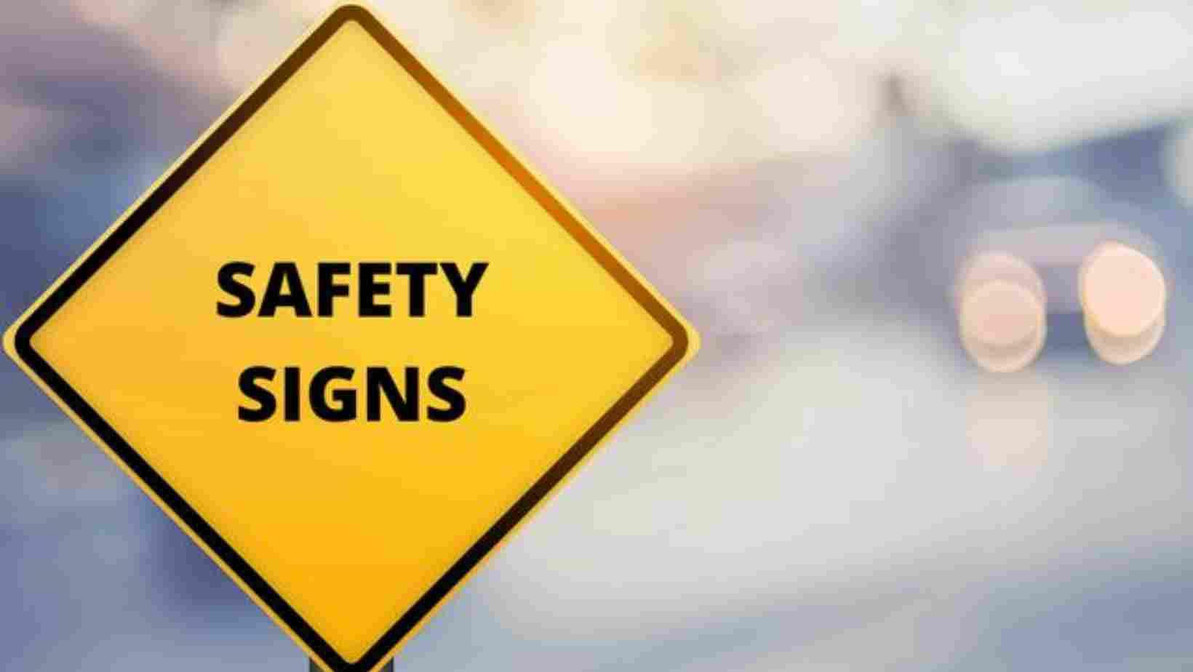The importance of Safety Signage in the Workplace
Safety signs play a crucial role in promoting workplace safety across various settings, from office buildings to construction and manufacturing sites. These signs serve as easily recognizable indicators of potential hazards, are utilised as an effective means to significantly reduce accidents, injuries and in some cases fatalities. Moreover, they serve as valuable tools for providing essential general information, education, and guidance in busy work environments.
Types of Safety Signs in the Workplace:
- Danger Signs: Examples include signs for high voltage, dangerous chemicals, and radiation. Displayed in areas with immediate hazards, these signs feature a red rectangle with the word "Danger" printed on top.
- Caution Signs: Indicating situations that may result in minor to moderate injuries, caution signs have a yellow panel background with an inverted triangle shape, containing the command word "Caution" in all-caps with all-black text.
- General Safety Signs: Serving as reminders of workplace safety rules and best practices, general safety signs use text and pictograms in green or black on a plain white or white on a green background.
Additional categories of safety signs include: Safety Instruction Signs, Admittance Signs, Fire Safety Signs, and Non-Hazard Signs, each serving specific purposes in maintaining a safe work environment.
Having sufficient Safety signage at work leads to:
- Prevention of Accidents and Injuries: Safety signs play a pivotal role in reducing the likelihood of workplace injuries and accidents. Many of these incidents are preventable through the reinforcement of proper safety communication and signage, enabling employees to be more alert to workplace hazards and respond promptly to incidents.
- Compliance: Safety signs aid in ensuring compliance with standards and requirements. Failure to comply with regulatory safety signage standards can lead to penalties for businesses with an emphasizes on the visibility of proper signage at all times in at-risk areas where work is being performed.
- Integrity: Prioritizing the health and safety of the workforce is the top responsibility of any operation. Safety signs contribute to the protection of employees and the establishment of a safe, secure work environment. By staying compliant with signage standards, an operation demonstrates its commitment, value, and respect for every employee.
- Security: While the primary function of safety signs is to keep employees safe, they also serve to enforce security. Admittance signs clearly designate prohibited areas to unauthorized personnel, contributing to theft deterrence.
- Employee and Visitor Education: Safety signs serve as effective educational tools, particularly in environments with prevalent dangers like manufacturing or engineering. In crisis situations, these signs guide employees appropriately. Additionally, new employees often learn about corporate safety practices through signage, emphasizing the need for clear and concise communication.
For assistance with safety signage and compliance in the workplace, Total Source offers various safety signage to help operations meet compliance standards, reduce injuries, and safeguard the well-being of the workforce. Contact our team at sales@totalsource.ie for more information.
Recent Posts
-
The Importance of using the correct Safety Wear when using a chainsaw
Using a chainsaw is a dangerous task that requires proper safety precautions to prevent serious inju …6th Mar 2025 -
How to identify quality painter's wear
When working as a painter, you need durable workwear that provides exceptional freedom of movement. …6th Mar 2025 -
How to choose the right ladder for your needs
It is important to ensure you choose the ladder best suited to your needs. Our partners at Werner La …8th Aug 2024




